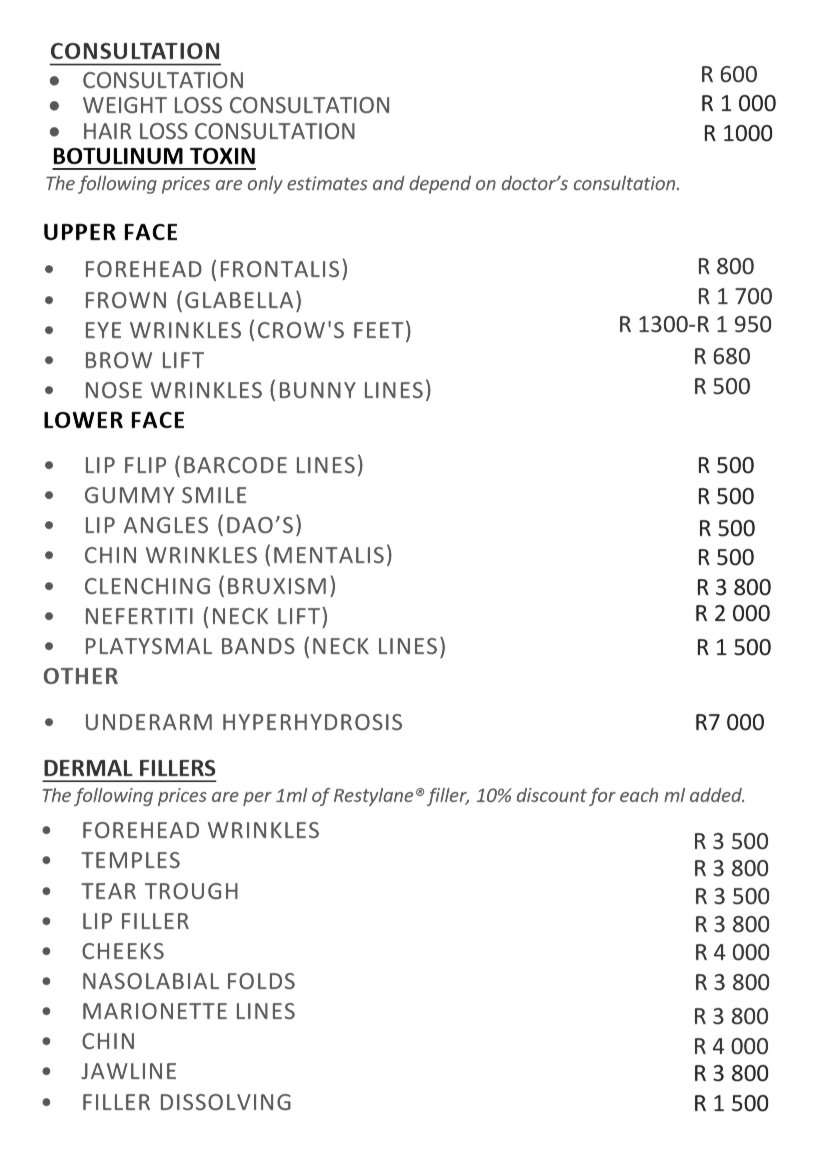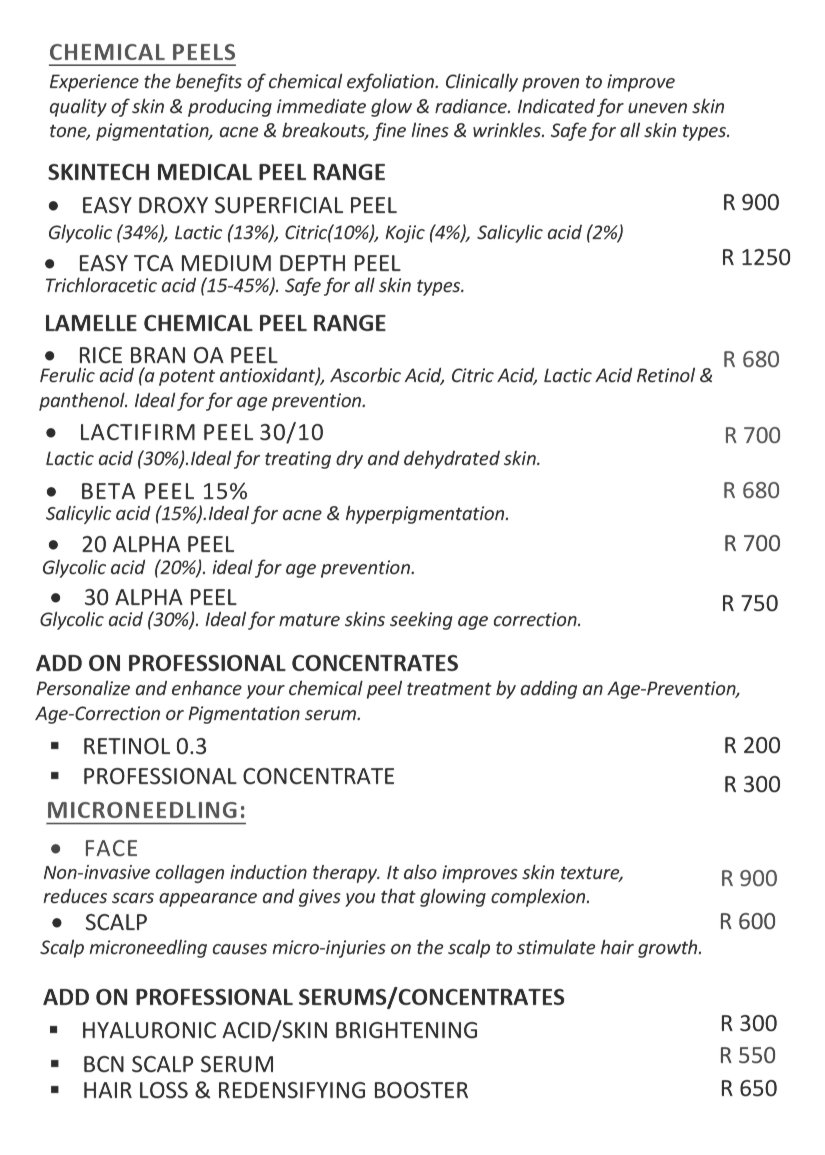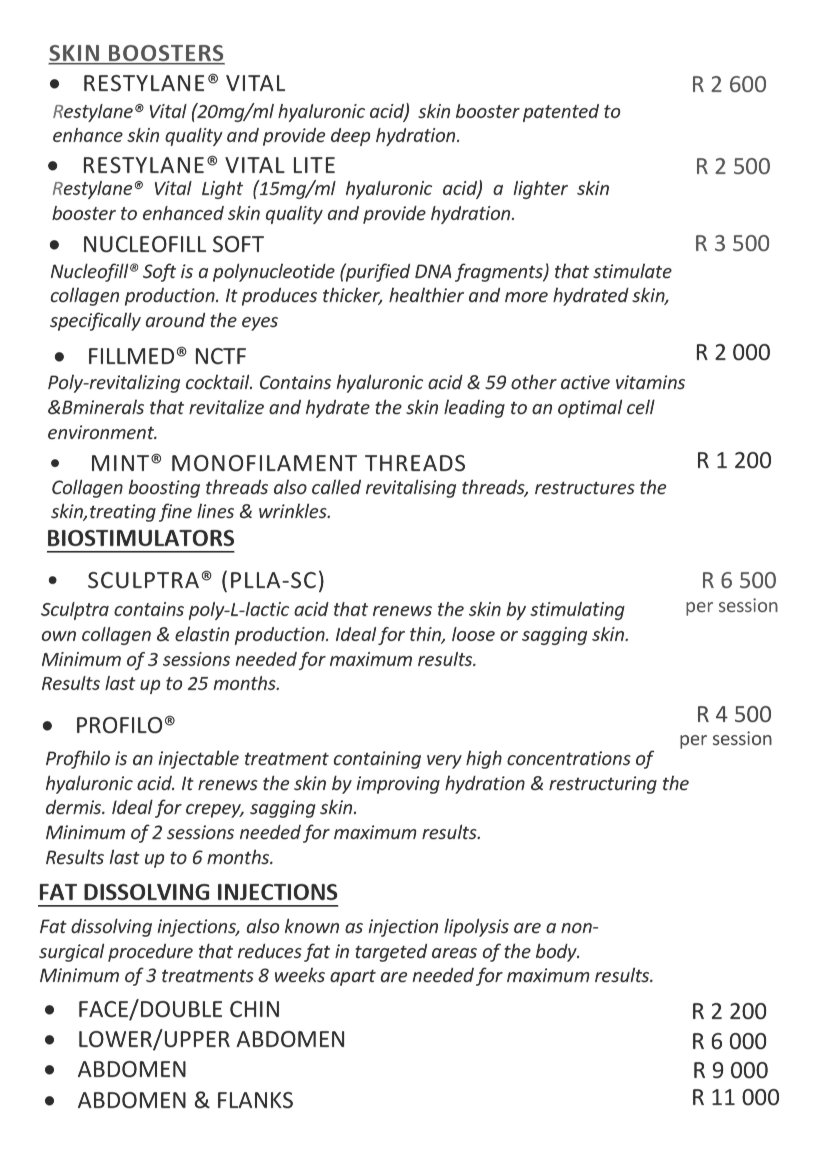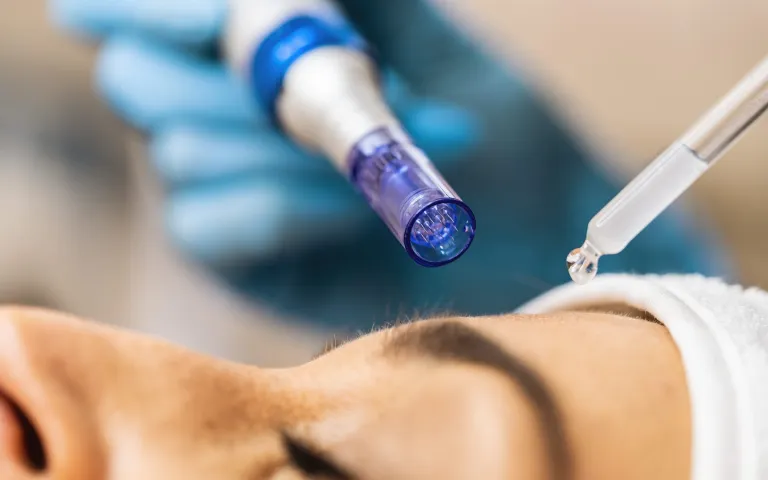Chemical peels can be classified according to the depth ,or according to the chemical agent used e.g. Alpha Hydroxy Acids, Beta Hydroxy Acids, Trichloroacetic Acid (TCA) and more.

Treatments,
Chemical Peel
What is it?
Chemical peels can be classified according to the depth (superficial, medium and deep),or according to the chemical agent used e.g. Alpha Hydroxy Acids (e.g. glycolic acid, lactic acid and malic acid), Beta Hydroxy Acids (e.g. Salicylic acid), Trichloroacetic Acid (TCA) and many more.
How does it work?
Typical chemical peel reactions include skin tingling, stinging, itching and sunburn sensation. Post peel treatment is always advised and include avoiding direct sunlight and applying broad-spectrum sunscreen.
Results
NOTE
Chemical peels are contra-indicated in:
- Persons on active Isotretinoin (e.g. Oratane, Roaccutane) treatment
- Persons currently breastfeeding
- Persons younger than 12 years
* Superficial peels are safe during pregnancy.




